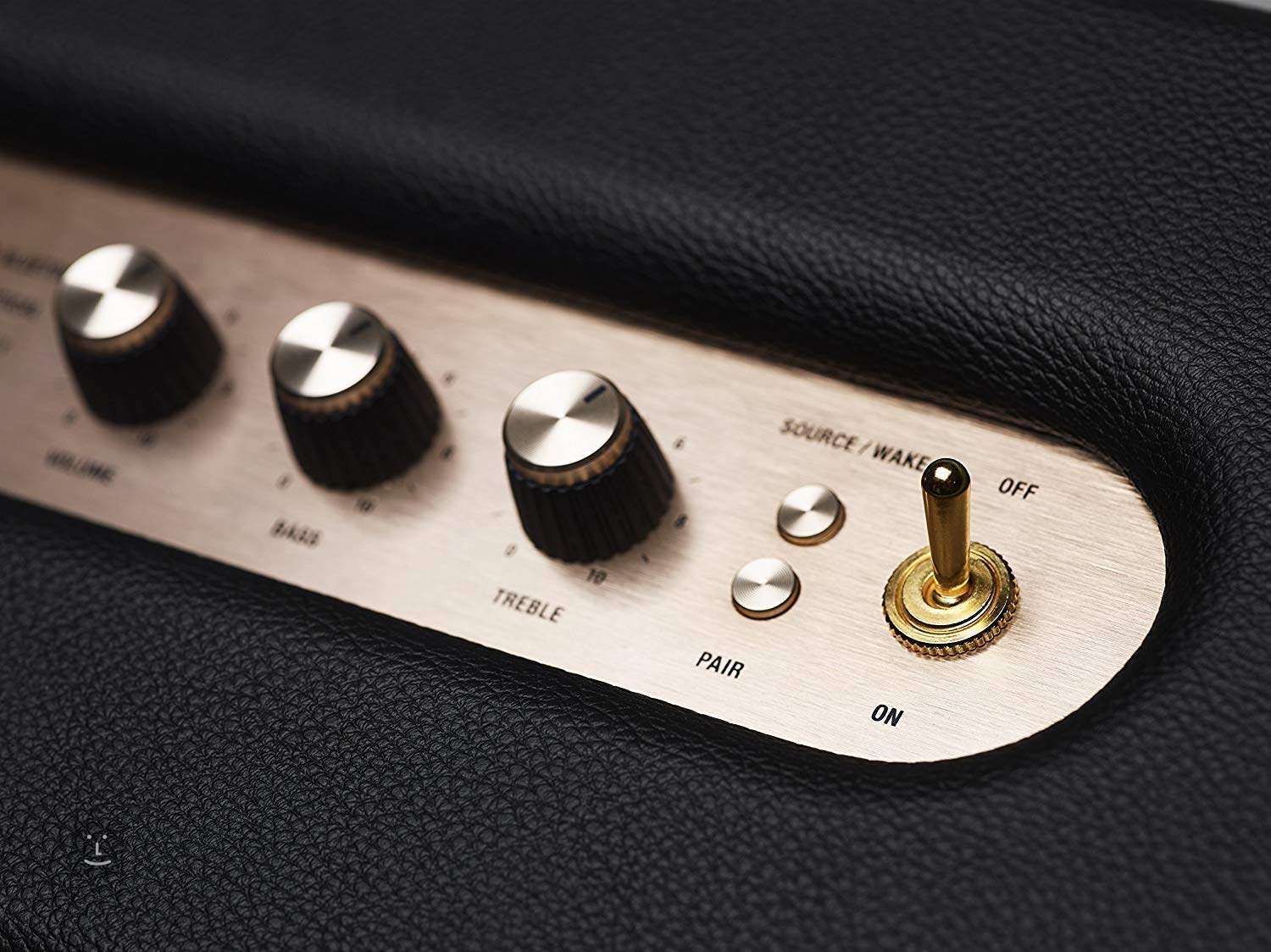Home>Instruments>Drums>How To Roll On Drums


Drums
How To Roll On Drums
Published: February 8, 2024
Learn how to roll on drums with our comprehensive guide. Master the art of drumming and improve your skills today.
(Many of the links in this article redirect to a specific reviewed product. Your purchase of these products through affiliate links helps to generate commission for AudioLover.com, at no extra cost. Learn more)
Table of Contents
Introduction
Introduction
Drum rolls are an essential part of a drummer's repertoire, adding depth, dynamics, and excitement to music. Mastering the art of drum rolls requires precision, control, and a deep understanding of rhythm. Whether you're a beginner or an experienced drummer looking to refine your skills, this comprehensive guide will walk you through the fundamentals of executing flawless drum rolls. From selecting the right drumsticks to perfecting hand techniques and mastering advanced rolls, this article will equip you with the knowledge and techniques needed to elevate your drumming prowess.
Drum rolls are not only about creating a continuous sound but also about expressing emotions and adding flair to a musical piece. The ability to execute smooth and powerful drum rolls can greatly enhance a drummer's performance, making them an indispensable asset to any band or musical ensemble. As you embark on this rhythmic journey, remember that practice, patience, and dedication are key to achieving mastery.
In the following sections, we will delve into the intricacies of drum rolls, starting with the selection of the right drumsticks and proper hand techniques. We will then progress to mastering basic and advanced drum rolls, providing valuable tips to help you hone your skills. Whether you're aiming to impress with a captivating drum solo or simply looking to add finesse to your drumming, this guide will serve as your roadmap to achieving exceptional drum rolls.
So, grab your drumsticks, find your rhythm, and let's dive into the world of drum rolls, where precision meets passion and beats come to life.
Choosing the Right Drumsticks
Choosing the Right Drumsticks
When it comes to achieving impeccable drum rolls, selecting the right drumsticks is the first crucial step. Drumsticks come in a variety of sizes, materials, and tip shapes, each influencing the sound and feel of your drumming. The following factors should be considered when choosing drumsticks:
- Size: Drumsticks are available in different sizes, typically ranging from 7A (thinner) to 2B (thicker). Thinner sticks are lighter and more suitable for intricate and fast playing, making them ideal for executing quick and precise drum rolls. Thicker sticks, on the other hand, offer more power and durability, making them suitable for heavier playing styles.
- Material: Drumsticks are commonly made of hickory, maple, oak, or synthetic materials. Each material has its own unique characteristics, influencing factors such as weight, durability, and shock absorption. Consider experimenting with different materials to find the one that best complements your playing style and enhances your ability to execute smooth and controlled drum rolls.
- Tip Shape: The tip of a drumstick can be round, barrel, acorn, or oval-shaped, each producing distinct tonal qualities. For drum rolls, a round or barrel-shaped tip is often preferred, as it allows for consistent contact with the drumhead, resulting in a more even and controlled sound.
Additionally, it’s essential to consider your own comfort and playing style when choosing drumsticks. Visit a music store and test out different pairs to gauge how they feel in your hands and how they affect your playing. Ultimately, the right drumsticks should feel like an extension of your hands, providing the balance, responsiveness, and control necessary to execute flawless drum rolls.
By carefully selecting the appropriate drumsticks based on size, material, and tip shape, you can set the stage for mastering exceptional drum rolls. Remember, the drumsticks serve as the direct link between your creativity and the drum set, so choose wisely and let your rhythmic journey begin.
Proper Hand Technique
Proper Hand Technique
Developing proper hand technique is fundamental to achieving fluid and controlled drum rolls. The way you hold and strike the drumsticks directly impacts the sound and consistency of your rolls. Here are essential tips for mastering proper hand technique:
- Grip: Hold the drumsticks using a matched grip, where both hands mirror each other. The fulcrum, or the point where the thumb and index finger make contact with the stick, should be positioned about an inch from the butt end. This balanced grip allows for equal control and responsiveness in both hands, essential for executing symmetrical and precise drum rolls.
- Wrist Motion: Utilize a combination of wrist motion and finger control to produce smooth and controlled drum rolls. The wrists should provide the primary driving force, while the fingers offer additional finesse and dexterity. Practice alternating between wrist strokes and finger control to develop a seamless and dynamic rolling motion.
- Pressure and Rebound: Apply consistent pressure on the drumsticks while striking the drumhead to produce a full and resonant sound. After each stroke, allow the sticks to rebound naturally, harnessing the drumhead’s bounce to maintain a continuous and even flow of sound. Mastering the balance between pressure and rebound is crucial for sustaining seamless drum rolls.
- Hand Position: Maintain a relaxed and natural hand position to minimize tension and fatigue. Avoid gripping the sticks too tightly, as this can impede fluid motion and hinder the execution of smooth rolls. Keep the hands and wrists loose and supple, allowing for effortless movement and precise control over the drumsticks.
Consistent practice and mindful attention to hand technique will gradually refine your ability to execute flawless drum rolls. Focus on developing a relaxed and efficient grip, harnessing the power of your wrists, and maintaining a balanced pressure-rebound cycle. With time and dedication, proper hand technique will become second nature, empowering you to unleash captivating and expressive drum rolls.
Basic Drum Rolls
Basic Drum Rolls
Mastering basic drum rolls forms the foundation of a drummer’s skill set, laying the groundwork for more complex and dynamic techniques. The key to executing smooth and consistent basic drum rolls lies in developing control, timing, and coordination. Here’s a step-by-step guide to mastering basic drum rolls:
- Start with Single Strokes: Begin by practicing single strokes with each hand, focusing on producing even and consistent sounds. Alternate between the right and left hands, maintaining a steady rhythm and equal strength in each stroke.
- Introduce Double Strokes: Gradually transition to double strokes, where each hand plays two consecutive notes. Focus on maintaining a balanced and controlled motion, allowing the sticks to rebound naturally after each stroke.
- Develop Hand-to-Hand Coordination: Work on synchronizing the movements of both hands to create seamless hand-to-hand transitions. Practice playing continuous double strokes, ensuring that both hands produce uniform and synchronized sounds.
- Experiment with Dynamics: Explore variations in dynamics by adjusting the intensity of your strokes. Practice playing soft and loud rolls, mastering the ability to control the volume and intensity of each stroke for expressive and dynamic drum rolls.
It’s important to practice basic drum rolls at different tempos, gradually increasing the speed as you gain proficiency. Focus on maintaining a consistent rhythm and sound quality, paying attention to the evenness of each stroke and the smooth transition between hands. As you dedicate time to perfecting basic drum rolls, you’ll develop the essential control and coordination needed to progress to more advanced roll techniques.
Remember, mastering basic drum rolls is a journey that requires patience and persistence. Embrace each practice session as an opportunity to refine your technique and elevate your drumming skills. With dedication and a solid foundation in basic rolls, you’ll be well-equipped to tackle more intricate and challenging drum roll variations.
Advanced Drum Rolls
Advanced Drum Rolls
Advancing to more complex drum rolls opens up a world of rhythmic possibilities, allowing drummers to showcase their technical prowess and creativity. Mastering advanced drum rolls requires a heightened level of control, coordination, and finesse. Here’s a guide to mastering advanced drum rolls:
- Explore Multiple Bounce Rolls: Practice executing multiple bounce rolls, where the sticks rebound multiple times with each stroke. Focus on harnessing the natural bounce of the drumhead to create sustained and controlled rolls, allowing the sticks to work in tandem with the drum’s resonance.
- Integrate Buzz Rolls: Experiment with buzz rolls, also known as closed rolls, by applying consistent pressure to the drumsticks to produce a continuous buzzing sound. Mastering buzz rolls requires precise control over stick pressure and subtle wrist movements to sustain a seamless buzz throughout the roll.
- Incorporate Flams and Ruffs: Add flams and ruffs to your rolls to introduce dynamic accents and embellishments. Practice integrating these rudiments into your rolls, alternating between single strokes and flam/ruff combinations to create engaging and varied rhythmic textures.
- Experiment with Orchestral Rolls: Delve into the realm of orchestral rolls, which demand refined control and sensitivity. Orchestral rolls involve producing smooth, expressive rolls with subtle variations in dynamics, adding depth and nuance to orchestral and symphonic compositions.
Mastering advanced drum rolls requires dedicated practice and a keen ear for precision and expression. Focus on refining your control over stick rebound, pressure, and wrist movements to execute these intricate roll variations with finesse. As you delve into the realm of advanced rolls, embrace the opportunity to express your musicality and showcase your technical proficiency.
Remember, patience and persistence are essential when mastering advanced drum rolls. Approach each practice session with a focus on precision and artistry, allowing yourself to explore the rhythmic intricacies of advanced roll techniques. With dedication and a commitment to continuous improvement, you’ll elevate your drumming to new heights, captivating audiences with your mastery of advanced drum rolls.
Tips for Improving Drum Rolls
Tips for Improving Drum Rolls
Refining your drum roll technique is an ongoing journey that involves continuous practice, attention to detail, and a willingness to explore new approaches. Here are valuable tips to enhance and elevate your drum roll proficiency:
- Focus on Relaxation: Maintain a relaxed posture and hand grip while practicing drum rolls. Tension can impede fluid motion and hinder your ability to produce smooth and controlled rolls. Keep your wrists supple and allow the sticks to rebound naturally, minimizing unnecessary tension in your hands and arms.
- Utilize Controlled Breathing: Incorporate controlled breathing techniques to maintain steady rhythm and endurance during extended roll passages. Focus on deep, rhythmic breathing, syncing your breath with the motion of your rolls to sustain energy and focus throughout your performance.
- Embrace Dynamic Control: Practice executing drum rolls with varied dynamics, mastering the ability to seamlessly transition between soft, medium, and loud rolls. Dynamic control adds depth and expression to your rolls, allowing you to convey emotion and intensity through nuanced variations in volume.
- Engage in Slow Practice: Dedicate time to slow, deliberate practice to refine the subtleties of your roll technique. Slow practice allows you to focus on precision, hand coordination, and stick control, laying a solid foundation for executing seamless rolls at faster tempos.
- Record and Analyze: Record your practice sessions and performances to gain valuable insights into your roll technique. Listen attentively to identify areas for improvement, such as unevenness in stroke intensity, timing discrepancies, or inconsistencies in roll duration. Use these recordings as a tool for self-assessment and targeted refinement.
- Seek Feedback and Guidance: Collaborate with experienced drummers or instructors to receive constructive feedback and guidance on improving your roll technique. Embrace mentorship and peer collaboration as valuable resources for refining your skills and gaining fresh perspectives on roll execution.
By incorporating these tips into your practice routine and performances, you’ll gradually enhance the quality, precision, and expressiveness of your drum rolls. Embrace each practice session as an opportunity for growth and refinement, and celebrate the progress you make along the way. With dedication and a commitment to continuous improvement, your drum roll technique will evolve to captivate and inspire audiences with its artistry and finesse.
Conclusion
Conclusion
Embarking on the journey to master the art of drum rolls is a rewarding pursuit that demands dedication, creativity, and a deep understanding of rhythm. From selecting the right drumsticks to honing proper hand technique and delving into the intricacies of basic and advanced rolls, this comprehensive guide has provided you with the essential knowledge and techniques to elevate your drumming prowess.
As you continue to refine your drum roll technique, remember that progress is achieved through consistent practice, mindful attention to detail, and a passion for musical expression. Embrace each practice session as an opportunity for growth, allowing yourself to explore the rhythmic intricacies of drum rolls with curiosity and determination.
Whether you’re aiming to deliver captivating drum solos, enhance ensemble performances, or simply revel in the joy of rhythmic expression, the mastery of drum rolls holds the power to elevate your musicality and leave a lasting impression on listeners. Embrace the nuances of dynamics, control, and expression, infusing your drum rolls with a unique blend of technical proficiency and artistic flair.
As you conclude your rhythmic journey through the world of drum rolls, carry with you the spirit of creativity, the discipline of practice, and the joy of musical discovery. Your drumming endeavors are a testament to the power of rhythm and the boundless potential of artistic expression. With each roll of the drum, let your passion resound, and may your rhythmic journey continue to inspire and uplift both your own spirit and the hearts of those who lend their ears to your beats.











